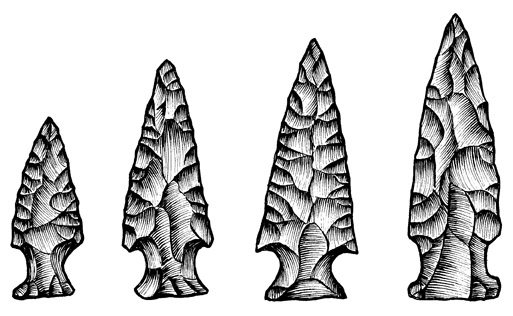NORMANSKILL POINTS
Middle to Late Archaic: 5,000 to 3,000
BP

DESCRIPTION: The length ranges from 35 to 70 mm, with
the majority averaging 45 mm. The thicknesses ranges from 5 to
10 mm. The Normanskill is a slender, thick point of medium size
with prominent side-notches. Blade narrow and triangular, markedly
biconvex in cross section, straight edged. Stem boldly notched
and slightly thinned by coarse flaking. The base is straight or
very slightly concave, but rarely shows smoothing by grinding.
The type suggests a narrower version of the Brewerton side-notched,
which occurs with it on eastern New York sites. Possibly transitional
between the Lamoka side-notched and Brewerton side-notched.
DISTRIBUTION: Eastern New York, mainly along the Hudson
River and its tributaries, such as the Normanskill, Mohawk and
Hoosic from Glen Falls to Kingston. The type also spread into
southeastern Ontario during the late Archaic.
RAW MATERIAL: The majority were made from local cherts.
The percussion technique was used for the basic shaping, with
pressure flaking to produce the varying amounts of marginal retouching.
AGE AND CULTURE: It occurs in varying amounts on middle
Archaic sites, and constitutes an element of the Vosburg complex,
Laurentian tradition. The Normanskill appears to be transitional
between the Lamoka and the Brewerton side notched points.
REFERENCES: Ritchie, 1961, pp. 37-38, 91. Overstreet, 2003,
p. 150.

